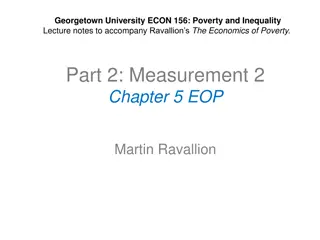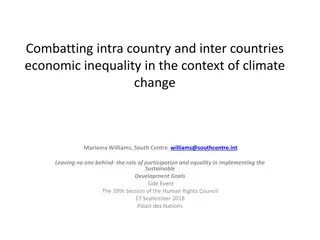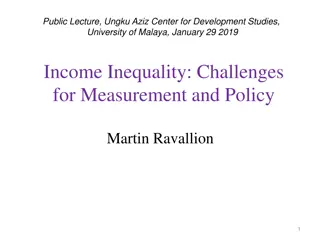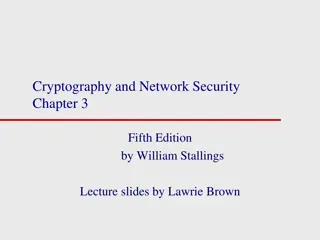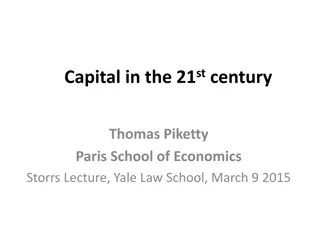
Structural Inequality and Social Institutions
Learn about structures, institutions, and how they create privilege and inequality in society. Explore examples of major institutions and how they function, impacting individuals and groups differently based on social factors.
Download Presentation

Please find below an Image/Link to download the presentation.
The content on the website is provided AS IS for your information and personal use only. It may not be sold, licensed, or shared on other websites without obtaining consent from the author. If you encounter any issues during the download, it is possible that the publisher has removed the file from their server.
You are allowed to download the files provided on this website for personal or commercial use, subject to the condition that they are used lawfully. All files are the property of their respective owners.
The content on the website is provided AS IS for your information and personal use only. It may not be sold, licensed, or shared on other websites without obtaining consent from the author.
E N D
Presentation Transcript
NUB 102: NUB 102: Structural Inequality Structural Inequality Block 5a (Fall 2016)
Learning Objectives Learning Objectives What are structures/institutions and how do they function? How do institutions create privilege for some individuals and groups in society and inequality for others? What is structural inequality? What are some examples? Why is understanding structural inequality important?
What Are What Are Structures/Institutions Structures/Institutions? ? To define structural inequality, we have to first define the term structures. Structures are societal institutions. Structures, or institutions, are social organizations that involve established patterns of behavior organized around particular purposes. They function through social norms (cultural expectations), which [ ] are institutionalized and patterned into organizations and sometimes established as rules and/or laws. Source: Susan Shaw and Janet Lee, eds. Women s Voices, Feminist Visions: Classic and Contemporary Readings. 6th ed. New York: Mc-Graw Hill, 2015, 63.
Examples of Institutions Examples of Institutions Looking at the list, which of these Looking at the list, which of these institutions institutions Major institutions in our society include the family, marriage, the economy [including business and industry], government and criminal justice systems, religion, education, science, health and medicine, mass media, the military, and sports (Shaw and Lee 63). make you feel good or good about make you feel good or good about yourself? yourself? make you feel included, safe, or whole? (no make you feel included, safe, or whole? (no threat posed) threat posed) don t make you feel good or good about don t make you feel good or good about yourself? yourself? Powerful don t make you feel included, safe, or don t make you feel included, safe, or whole? (a threat is posed) whole? (a threat is posed) Socializing agents Important
How Do Institutions Function? How Do Institutions Function? Societal institutions have their own distinct set of rules, ideologies, roles, practices, laws, and resources, which, in turn, are distributed to individuals and groups in society. This distribution often creates and maintains advantage for some and disadvantage for others depending on their social location (i.e. factors gender, gender identity, sex, race, ethnicity, class, sexual orientation, age, religion, education, etc.). The distribution can be: Intentional or unintentional (e.g. established laws vs. company practices) Direct or indirect (raises vs. preferential treatment for a certain gender or race)
How Do Institutions Create How Do Institutions Create Structural Inequality? Structural Inequality? Combined, all of these societal institutions create a web (or system) of advantage/privilege and disadvantage/inequality for different individuals and groups in society. . In other words, institutions create systems of privilege and inequality (e.g. race, racism, and white privilege) that are structural barriers to equality and inclusiveness. This is known as structural inequality.
What is Structural Inequality? What is Structural Inequality? Structural inequality refers to the system of privilege and inequality created and maintained by interlocking societal institutions. It is also referred to as: systemic inequality systematic/institutionalized oppression specific types: structural racism, institutionalized homophobia, systematic sexism As these terms suggest, inequality is embedded within and across institutions. In other words, the major institutions in society are interconnected and work to support and maintain one another (Shaw and Lee 65).
Video #1: Video #1: The House We Live In The House We Live In SOCIETAL INSTITUTIONS family/marriage the economy government and politics the criminal justice system religion education science health and medicine mass media the military sports business/industry workplace Click here for video 1. Which institutions listed here worked together to create and maintain structural racism in the form of housing segregation and other unfair practices? 1. What happened as a result? Think about both short- and long-term effects/consequences.
Video #2: Video #2: Racism: Is It Over Yet? Racism: Is It Over Yet? According to Green, why is it hard for According to Green, why is it hard for some some Americans Americans to understand that to understand that racism is still a problem today? racism is still a problem today? What solutions does Green offer to What solutions does Green offer to combat racism? What solutions do combat racism? What solutions do you have in general and for our you have in general and for our discipline in terms of the workplace? discipline in terms of the workplace? For instance, what might be needed For instance, what might be needed in the workplace to increase diversity in the workplace to increase diversity and lessen potential individual or and lessen potential individual or institutional forms of racism? institutional forms of racism? Click here for video What were some examples of structural What were some examples of structural inequality in this video? Or some specific inequality in this video? Or some specific institutions that were mentioned or institutions that were mentioned or alluded to? alluded to?
Video #3 (time permitting) Video #3 (time permitting) Click here for video 1. Obama declares that the confederate flag is a reminder of systemic oppression, which is aka structural inequality. What do you think Obama means by this? Which institutions listed here came together to create and maintain the system of slavery? How so? 2. Which of these institutions were positively affected/advantaged by the system of slavery and which ones were negatively affected/disadvantaged by slavery?
Whats the Big Picture? What s the Big Picture?



